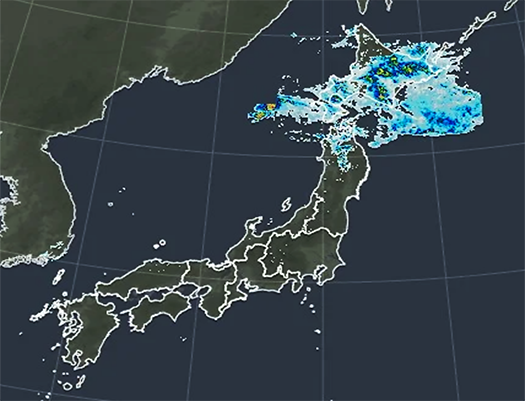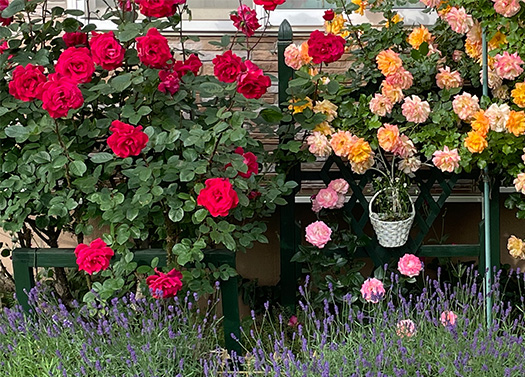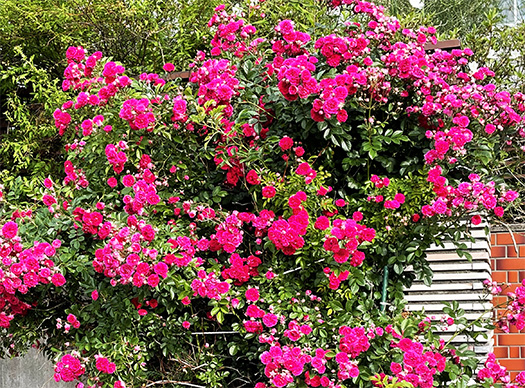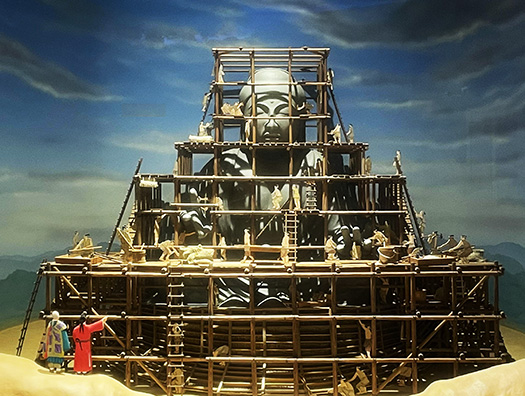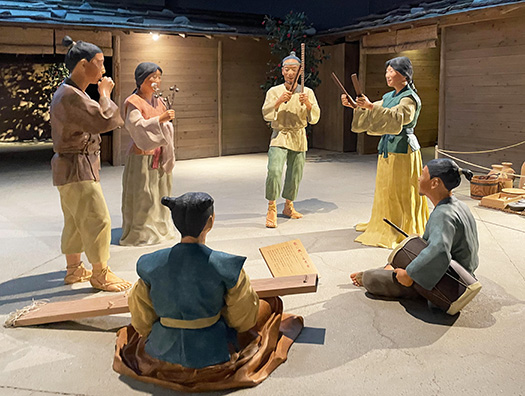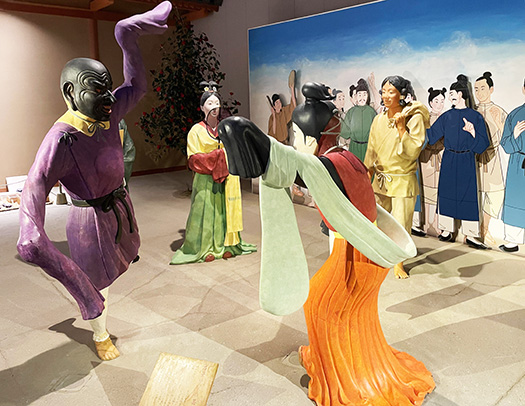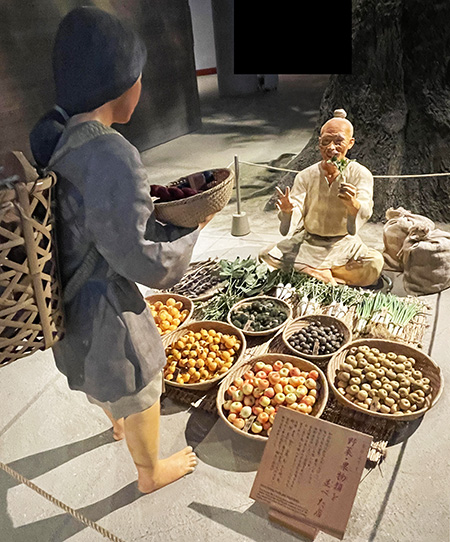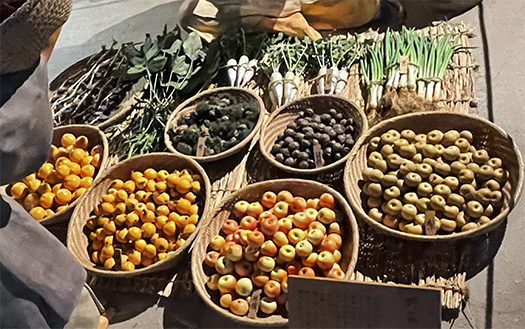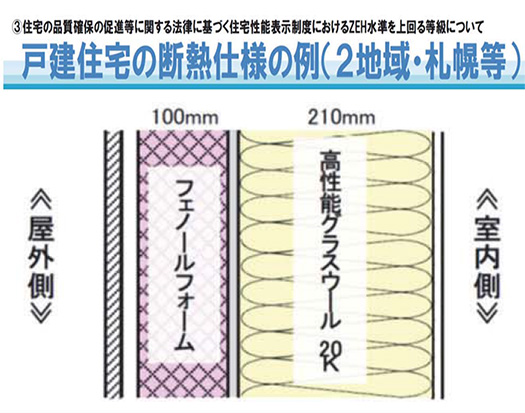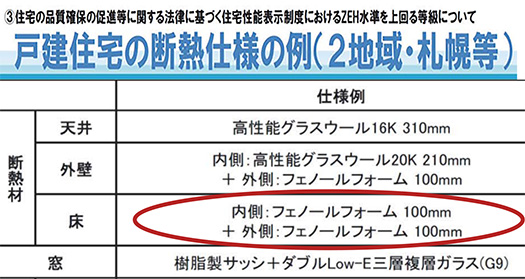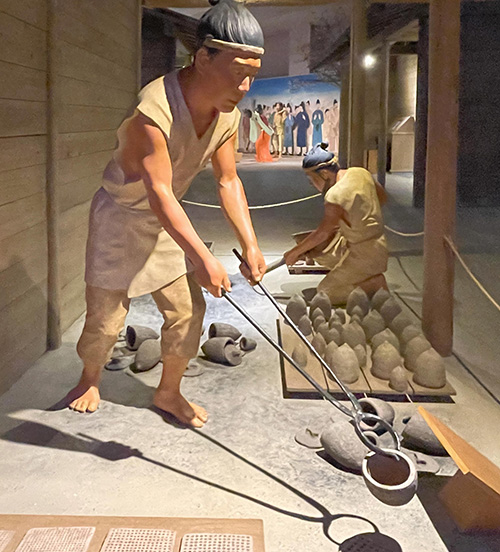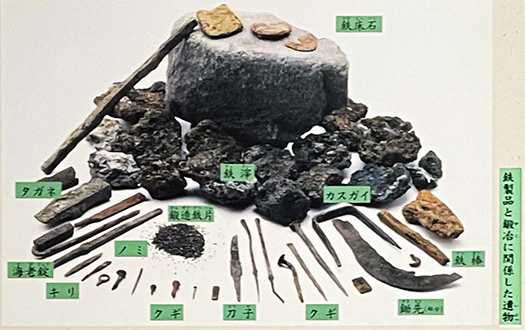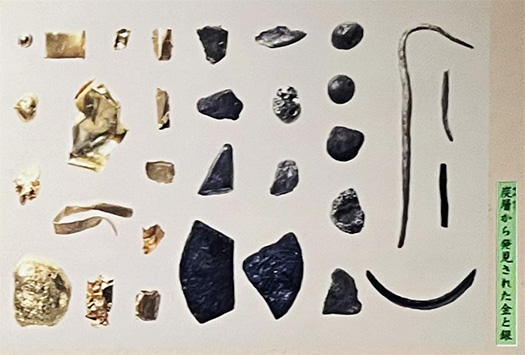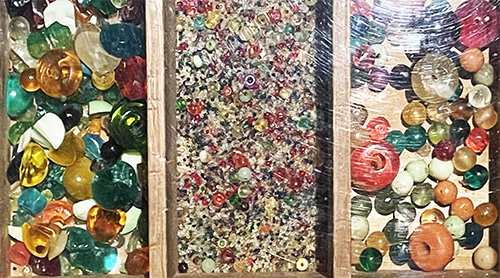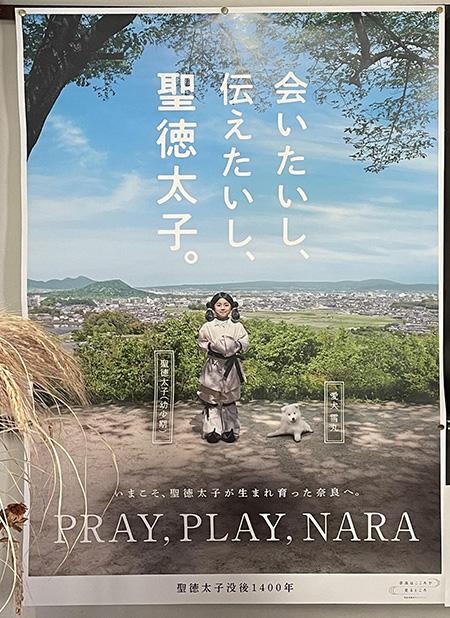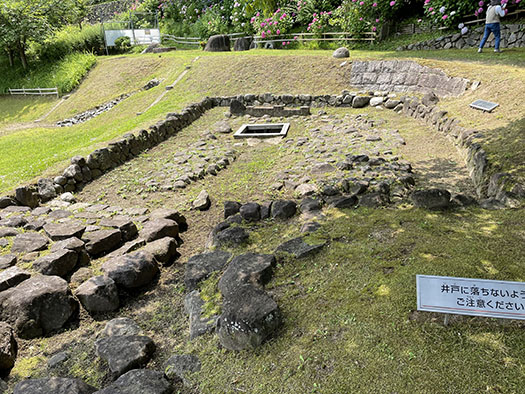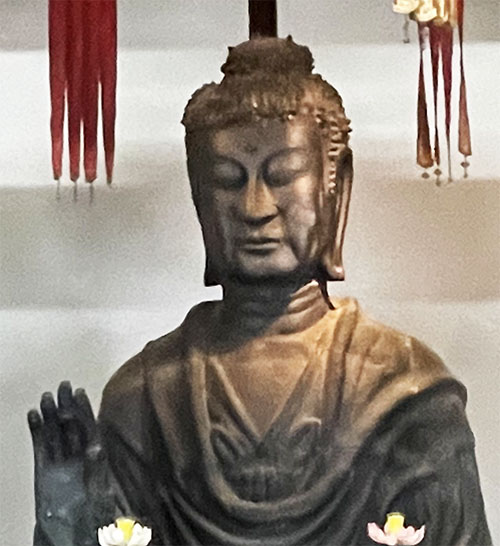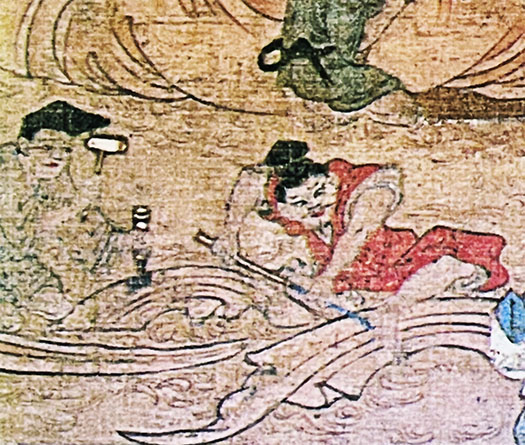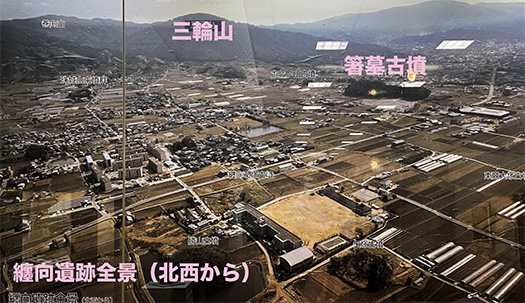
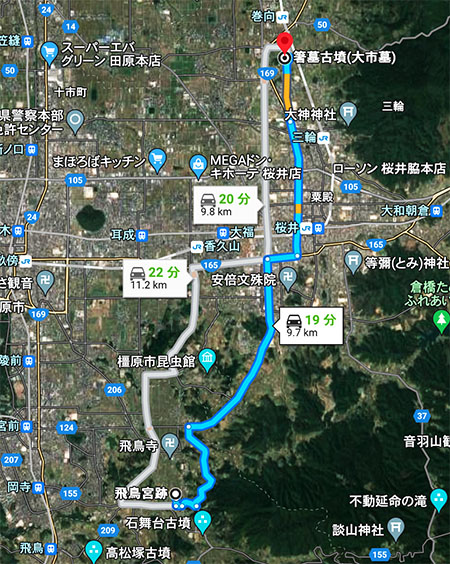
奈良盆地での歴史探検というのはまるで迷宮。
そこここで奥行きの深い事跡が発見されて深くとらわれる。
たぶん今後の最大の楽しみになっていくことは間違いがない。
そういう先達、飛鳥の万葉館のボランティアの方に遭遇。
つたない歴史探検ですがいろいろな現地での最新情報をお教え戴いた。
大神神社の麓の箸墓古墳は、宮内庁から「大市墓」として
第7代孝霊天皇皇女の倭迹迹日百襲姫命の墓に治定されている。
また笠井新也氏の研究以来、邪馬台国の女王卑弥呼の墓とする学説がある。
百襲姫の陰部に箸が突き刺さり絶命したことが名前の由来。〜以上Wiki引用。
そしてこの周辺の「纏向遺跡群」からは飛鳥よりも古い時代の発掘が
相次いできているというご案内をいただいたのです。

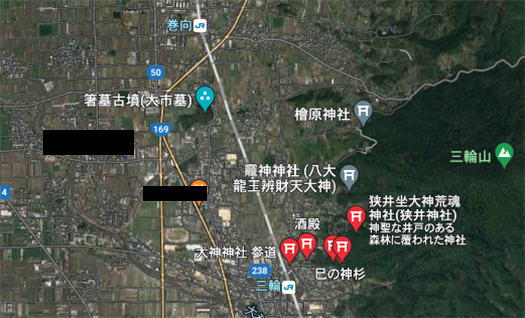
地図や航空写真で示すような位置関係にあるのが三輪山・大神神社と箸墓古墳。
飛鳥宮からは北東へ9.7kmの距離という位置関係。
飛鳥の都、乙巳の変を考えれば645年前後。
一方で箸墓古墳は、宮内庁発表を踏まえると孝霊天皇死亡年が紀元前215年。
そして三輪山の大神神社の伝承もそういった時期と重なる。
なにしろ、大神神社は出雲系の祭神伝説を持ち自然崇拝として
いまでも三輪山本体をご神体としている神社。
まぁこういった神話の類はそのまま信じるわけにはいかないけれど
しかし社会としてのある事情を伝えている部分があるのだと思います。
現代はそれを考古的に丹念に「掘り出す」ことが可能にもなってきている。
先述のご案内は、そうした考古発掘がこの遺跡で相次いできて
飛鳥の地との相関関係で興味深い展開になってきているという次第。
遠く北海道にいると歴史とは考古と一体のものが常識。
明治以前の言葉を持たない人間痕跡と丹念に向き合う中で
生々しいいのちの痕跡が出現していくというダイナミズム。
そういう現代的合理主義によって歴史が採掘されていくことは喜ばしい。
ひたすら物証を求めていくことで想像力を深めて
現実の「モノ」と真摯に向き合って事実を解明していく。
そういう手法で飛鳥の地、奈良盆地にスポットを当てていく。
どちらかというと「文献主義」が歴史学の基本とされてきたけれど、
やはり考古的発掘は紛れもない事実をあきらかにしていく。
北海道人にもわかりやすい考古事実解明はすばらしいと思っています。
ということで、桜井市立埋蔵文化財センターでの纏向遺跡探究。
どっぷりと浸りきっておりました。まだその余韻の中にいます(笑)。
たぶんこういった興奮ってDNA的な部分での刺激のような気がする。
English version⬇
Asuka Historical Testimony – 10] Spin out of Makimuku Ruins
The reality of the Nara Basin in the period even older than Asuka. Deep into the area around Oomiwa Shrine and Chopstick Tomb, where a series of archaeological discoveries have been made. …
Historical exploration in the Nara Basin is like a labyrinth.
Here and there, deep traces of history are discovered, and we are deeply caught up in the mystery.
I am sure that this will probably be my greatest pleasure in the future.
I met a volunteer from the Manyokan Museum in Asuka.
He gave me the latest information about the area, despite my poor historical exploration.
The Chopstick Tomb Tumulus at the foot of the Ojinja Shrine has been designated by the Imperial Household Agency as the “Oichi Tomb” by the 7th Emperor Koryo.
The tomb is designated by the Imperial Household Agency as the tomb of the 7th Emperor Koryo’s daughter, Wajaku-no-Hyakuso-mikoto.
Since the research of Mr. Shinya Kasai, there is a theory that it is the tomb of Himiko, the Queen of Yamataikoku.
The name comes from the fact that a chopstick pierced Princess Hyakusohime’s pubic region, causing her to die. 〜The above is a quote from Wiki.
And, there have been a series of excavations from the “Mukai ruins” in the vicinity of the site that date back to a period older than that of Asuka.
The “Makimuku ruins” in this area have been excavated one after another in the period older than Asuka.
As shown in the map and aerial photographs, the Miwasan-Okami Shrine and the Chopstick Tomb Tumulus are located in the same position.
The location is 9.7 km northeast of Asuka Palace.
Asuka’s capital, around the year 645 considering the Otsumi Incident.
On the other hand, according to the announcement by the Imperial Household Agency, Emperor Koryo died in 215 B.C. The tomb is located 9.7 km northeast of the Asuka Palace.
The legend of the Ogami Shrine on Mount Miwa also coincides with such a period.
The legend of Ookami Shrine is based on the Izumo lineage, which is a form of nature worship.
The shrine is still a Shinto shrine with the main body of Miwa as its deity.
Well, we cannot believe in these myths as they are.
But I believe that they convey a certain situation as a society.
Today, it is possible to archaeologically and painstakingly “dig out” such information.
The aforementioned information is based on the fact that such archaeological excavations have been carried out one after another at this site.
The above-mentioned information is based on the fact that such archaeological excavations have been carried out one after another at this site, and that interesting developments are taking place in correlation with Asuka.
When you are far away in Hokkaido, it is common knowledge that history is an integral part of archaeology.
In the course of painstakingly confronting the traces of human beings who did not have words before the Meiji period
The dynamism of the emergence of fresh traces of life.
I am glad that history is being mined by such modern rationalism.
We deepen our imagination by relentlessly seeking for physical evidence.
We are sincerely confronting the real “things” to clarify the facts.
This is how we spotlight the Asuka area and the Nara Basin.
Although “literalism” has been considered the basis of historical studies, archaeological excavations are still an indisputable part of it.
However, archaeological excavation reveals undeniable facts.
I think it is wonderful that archaeological facts are revealed in a way that can be easily understood by the people of Hokkaido.
So, I explored the Sumamukai Ruins at the Sakurai Municipal Archaeological Center.
I was fully immersed in the experience. I am still in the aftermath of that (laugh).
I think this kind of excitement is probably stimulated by our DNA.
Posted on 7月 1st, 2022 by 三木 奎吾
Filed under: 日本社会・文化研究, 歴史探訪 | No Comments »




